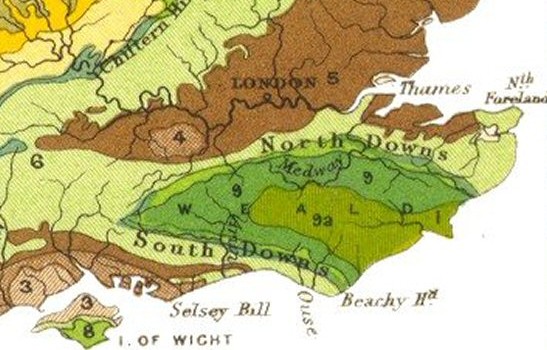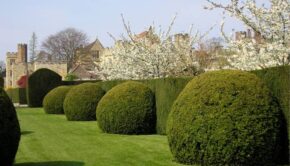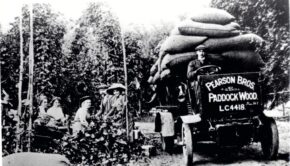Local History – The Weald
The area known as the Weald was once a vast forest known as Anderida and so it is no surprise to learn that the ‘Weald’ is an old English term meaning woodland. The area today includes villages and towns rich in history and culture as well as beautiful green countryside. It extends across the counties of Kent, East and West Sussex, Hampshire and Surrey.
The area really refers to the area, here in the South East of England, which sits between the North & South Downs. The Downs are parallel chalk escarpments or long steep slopes rising up from the lower central areas.
Both North and South Downs are known for long distance pathways. The North Downs way, now running from Farnham to Dover via Canterbury was a route famous as being used by pilgrims to the Cathedral.
The South Downs Way running between Eastbourne and Winchester has been in use for approximately 8000 years and was probably used by the Romans. Near to Eastbourne, the route of the path passes close by the Long Man of Wilmington, whose true origin and meaning remains unknown.
Geologically the area can be split into to three separate parts:
The centre often known as the High Weald is sandstone. The Low Weald, more on the periphery is clay and finally a grassland ridge including the highest points, the Downs, stretch around to the north and west.
Key: The High Weald is in lime green (9a); the Low Weald, darker green (9). Chalk Downs, pale green (6)
Source http://en.wikipedia.org/wiki/Weald
Over the centuries deforestation for the shipbuilding, charcoal and brick-making industries has left the Low Weald relatively sparse with only remnants of the dense original woodland cover. The sandstones of wealden rock are usually acidic, leading to development of habitats such as the heathland of Ashdown Forest. The Forest lies between Crowborough, Maresfield and Forest Row. It is a high sandy ridge overlooking heavily wooded hills of the Weald. A vast area open to the public, it is said to be the largest remaining part of Anderida.
Ashdown Forest was deer hunting forest in Norman times, and there is a history of manufacturing, agriculture, grazing, fuel & timber manufacture as well as iron working. Wealden sandstone contains ironstone and the area supported an iron industry for a long time. Records of Roman Britain list 33 iron mines with 67 per cent of these being in the Weald. All this resulted in considerable deforestation. The brick making industry was associated with Marl pits many of which are evident today.
The Weald has been used for centuries, possibly since the Iron Age, for transhumance or seasonal movement of people and their livestock between summer and winter pasture. For example animals were driven from the all areas around Paddock Wood to and from the rich pastures of Romney Marsh. The Weald was also used as summer grazing land, particularly for pannage, the practice of releasing domestic pigs in a forest, in order to feed on acorns, and other nuts.
Settlements on the Weald are widely scattered. Villages evolved in the woods, typically four to five miles apart which was close enough to be an easy walk but not so close as to risk or encourage intrusion. It is said Wadhurst was of a sufficient size by the mid thirteenth century to be granted a royal charter permitting a market to be held. The last livestock market there was closed in 1982.
The Weald has its own breed of cattle, known as Sussex. They were bred from strong hardy oxen, which continued to be used to plough the heavy soils of the Low Weald for many years. Now regarded as a rare breed, Sussex became red beef cattle and I was lucky enough when young to know one. He was called Cromwell, a steer (castrated male) who, in spite of a lineage of being well adapted for the haulage of loads, led a very sedate life.
He was a large beautiful soppy laid back boy, intact with a fine set of horns, and was discovered to be responsible for a few power cuts in Wadhurst. He had a favourite scratching post and why should he worry about power lines? In spite of all that he never became beef.
There were also Southdown and Kent breeds of sheep. Other breeds in local areas at the time (known to me) were Border Leicesters and Clun forest.






Comments